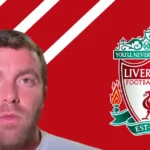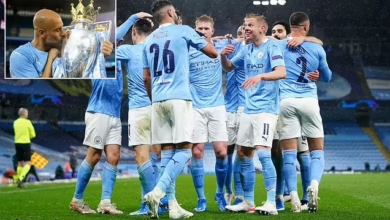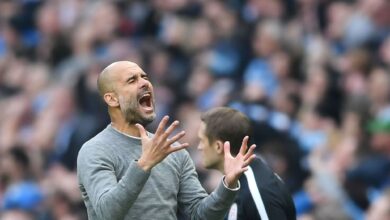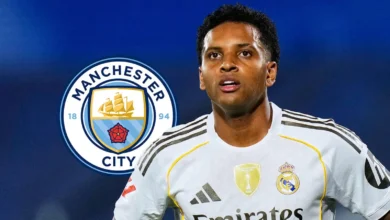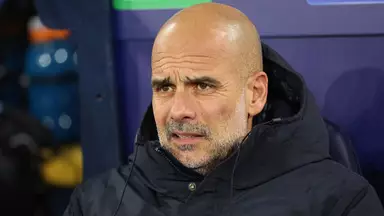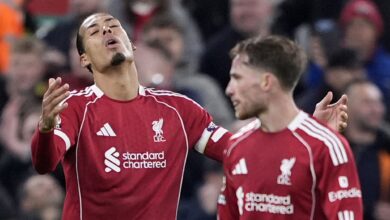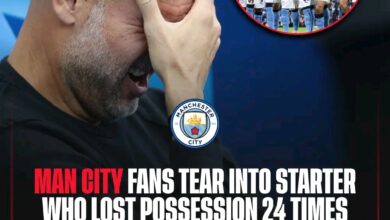Liverpool’s Double Defensive Pursuit: A Comprehensive Analysis of the Guehi and Leoni Transfer Saga
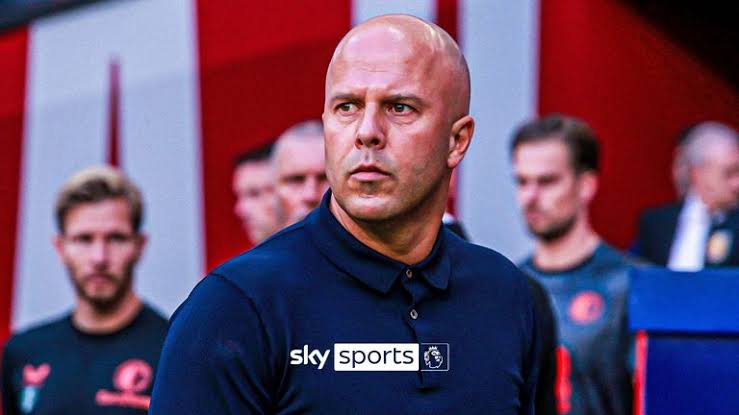
Liverpool Football Club finds itself at a pivotal juncture in its storied history. Under the guidance of new head coach Arne Slot, the Reds are embarking on a strategic overhaul that promises to reshape their defensive foundations for years to come. The Dutch tactician, who arrived at Anfield with a reputation for developing young talent and implementing progressive tactical systems, has identified two key targets that could transform Liverpool’s backline: Crystal Palace’s Marc Guehi and Parma’s emerging talent Giovanni Leoni.
The confirmation from renowned transfer specialist Fabrizio Romano that Liverpool has been actively pursuing both players for several weeks underscores the club’s commitment to addressing what many consider their most pressing concern. This dual approach represents more than mere squad strengthening; it signals a fundamental shift in Liverpool’s transfer philosophy, balancing immediate impact with long-term potential in a manner that could define the club’s trajectory under Slot’s stewardship.
Liverpool’s defensive vulnerabilities have become increasingly apparent over the past 12 months, exposing cracks in what was once considered one of the Premier League’s most formidable backlines. The statistics paint a concerning picture: the Reds have conceded goals at a rate that would have been unthinkable during their peak years under Jürgen Klopp. This decline isn’t merely statistical; it represents a fundamental shift in the team’s identity and effectiveness.
The root causes of these defensive issues are multifaceted. Age has begun to catch up with some key players, while injuries have disrupted continuity and partnerships that took years to develop. The high-intensity pressing system that defined Liverpool’s success under Klopp placed enormous physical demands on defenders, contributing to both acute injuries and cumulative wear that has now manifested in decreased performance levels.
Moreover, the tactical evolution of the Premier League has seen opposing teams develop increasingly sophisticated methods for exploiting defensive weaknesses. The rise of advanced analytics and video analysis has made it easier for opponents to identify and target vulnerable areas, making defensive solidity more crucial than ever. For Liverpool to compete at the highest level both domestically and in European competition, addressing these defensive shortcomings isn’t just advisable—it’s essential.
Marc Guehi represents everything Liverpool seeks in a modern center-back. At 24 years old, the England international has already demonstrated remarkable maturity and consistency in one of the world’s most demanding leagues. His journey from Chelsea’s academy through a loan spell at Swansea City to becoming Crystal Palace’s defensive cornerstone illustrates the kind of development pathway that Liverpool’s recruitment team values highly.
Guehi’s statistical profile makes for compelling reading. Over the past two seasons with Crystal Palace, he has maintained impressive defensive numbers while also contributing to the team’s build-up play. His pass completion rate of over 85% from defensive positions demonstrates the technical proficiency that modern center-backs require, while his aerial duel success rate and tackle completion statistics highlight his defensive fundamentals.
What makes Guehi particularly attractive to Liverpool is his versatility and intelligence. He has shown the ability to play in both a back four and a back three, adapting his positioning and role based on tactical requirements. This flexibility would be invaluable to Slot, who is known for his tactical adaptability and willingness to adjust systems based on opposition strengths and weaknesses.
The contractual situation adds urgency to Liverpool’s pursuit. With Guehi entering the final year of his deal at Selhurst Park, Crystal Palace faces a stark choice: accept a transfer fee now or risk losing a valuable asset for nothing next summer. This timeline pressure could work in Liverpool’s favor, potentially reducing the overall cost of the transfer while providing them with a player entering his prime years.
Guehi’s international experience with England, including his performances at major tournaments, has proven his ability to perform under pressure on the biggest stages. This mental fortitude would be crucial at Liverpool, where the expectation to win major trophies is constant and the scrutiny intense.
While Guehi represents an immediate solution to Liverpool’s defensive needs, Giovanni Leoni embodies the club’s vision for the future. At just 18 years old, the Italian defender has already attracted attention from across Europe, with his performances for Parma marking him as one of the most promising young center-backs in European football.
Leoni’s emergence at such a young age is particularly impressive given the demanding nature of Italian football, where defensive excellence is not just expected but culturally ingrained. His ability to establish himself as a regular starter for Parma while still a teenager speaks to both his technical ability and mental maturity—qualities that are essential for success at a club like Liverpool.
The young defender’s physical attributes align perfectly with the modern game’s requirements. Standing tall with excellent aerial ability, Leoni also possesses the pace needed to defend large spaces—a crucial attribute in Liverpool’s high-line defensive system. His distribution from the back has drawn particular praise, with scouts noting his ability to pick out forward passes that can initiate attacking moves.
What sets Leoni apart from many young defenders is his tactical awareness. Despite his age, he demonstrates an understanding of defensive positioning and timing that typically comes with years of experience. This suggests a high football IQ that could accelerate his adaptation to the Premier League’s unique demands.
Liverpool’s history of developing talent makes them an ideal destination for Leoni’s continued growth. The club’s track record with players like Trent Alexander-Arnold, who emerged from the academy to become world-class, demonstrates their ability to nurture young talent while providing opportunities for growth at the highest level
To fully appreciate the significance of these potential signings, it’s essential to understand the depth of Liverpool’s current defensive challenges. The departure of key figures, combined with the natural aging process and injury concerns, has created a perfect storm that has left the team vulnerable.
Ibrahima Konaté’s contract situation exemplifies the broader uncertainty surrounding Liverpool’s defense. The French international, who has shown flashes of brilliance but has also struggled with consistency, could leave on a free transfer next summer. This potential departure would represent not just a loss of talent but also a significant financial blow, given his market value and the investment made in his development.
Joe Gomez, once considered one of England’s most promising defenders, has seen his career repeatedly disrupted by serious injuries. While his quality remains evident when fit, the uncertainty surrounding his physical condition makes him an unreliable option for consistent selection. This injury history not only affects team selection but also limits Liverpool’s tactical flexibility.
The aging of Virgil van Dijk, while still performing at a high level, represents a long-term challenge that must be addressed proactively. The Dutch captain remains one of the world’s best defenders, but at 33, questions about succession planning become increasingly relevant. Finding players who can eventually fill such significant shoes requires careful planning and gradual integration.l
Arne Slot’s appointment as Liverpool’s head coach brings a fresh tactical perspective that could significantly influence how these defensive signings are utilized. The Dutch coach’s philosophy emphasizes positional play, ball retention, and intelligent pressing—principles that require defenders who are comfortable with the ball at their feet and capable of making quick decisions under pressure.
Slot’s preferred 4-3-3 formation, with variations that can shift to 4-2-3-1 depending on the game situation, places specific demands on center-backs. They must be able to step into midfield when in possession, provide width when fullbacks advance, and maintain defensive stability when teammates press high up the pitch. Both Guehi and Leoni possess the technical skills and tactical understanding to thrive in such a system.
The high defensive line that characterizes Slot’s tactical approach requires center-backs with pace and excellent reading of the game. Guehi’s Premier League experience would be invaluable in this regard, as he has already demonstrated his ability to defend large spaces effectively. Leoni’s physical attributes and tactical intelligence suggest he could adapt to this demanding style of play with proper development time.
Slot’s emphasis on building attacks from the back also highlights why these signings make tactical sense. Both players have shown the ability to initiate attacking moves with accurate passing, a skill that becomes even more important in a possession-based system where every player must contribute to ball retention and progression.
The financial aspects of these potential transfers reflect broader trends in the modern transfer market. Guehi’s valuation, influenced by his Premier League experience, England international status, and contract situation, represents the premium placed on proven talent in today’s market. However, his contractual position at Crystal Palace provides Liverpool with some negotiating leverage.
For Parma, Leoni represents a significant financial opportunity. The sale of promising young talent to major European clubs has become an essential revenue stream for many smaller clubs, and Liverpool’s interest could provide Parma with the funds needed for their own squad development.
The dual pursuit also reflects Liverpool’s strategic approach to the transfer market. Rather than placing all resources into a single high-profile signing, they are spreading their investment across immediate needs and future potential. This approach provides better value while also reducing risk.
The timing of these transfers is crucial from a financial perspective. Acting now, while Guehi is in his final contract year and Leoni is still developing, could provide Liverpool with significant value compared to waiting and potentially facing higher prices later.
These potential signings represent more than individual player acquisitions; they signal an evolution in Liverpool’s transfer philosophy under new leadership. The combination of proven Premier League experience with emerging talent reflects a more balanced approach to squad building.
This strategy acknowledges the realities of modern football, where success requires both immediate competitiveness and long-term sustainability. By pursuing players at different career stages, Liverpool can maintain competitiveness while building for the future—a approach that could define their success in the coming years.
The focus on defensive reinforcement also demonstrates the club’s willingness to address weaknesses honestly and proactively. Rather than hoping current players will rediscover form or that injuries will resolve themselves, Liverpool is taking decisive action to strengthen their squad where it’s needed most.
Despite the apparent logic of these pursuits, several challenges could complicate Liverpool’s transfer plans. Crystal Palace’s negotiating position, while weakened by Guehi’s contract situation, still allows them to demand a significant fee for their star defender. The London club may also be reluctant to sell to a direct competitor without receiving maximum value.
Competition from other clubs represents another potential obstacle. Both players have attracted interest from across Europe, and Liverpool may find themselves in bidding wars that could drive prices beyond their preferred limits. The modern transfer market’s inflation means that even seemingly straightforward deals can become complicated quickly.
Integration challenges also exist, particularly for Leoni, who would be adapting to a new country, language, and playing style simultaneously. While Liverpool’s history with young players is encouraging, not every promising talent successfully makes the transition to the Premier League’s unique demands.
Looking beyond immediate needs, these signings could lay the foundation for Liverpool’s defensive future for the next decade. Guehi, at 24, could provide stability and leadership during his prime years, while Leoni’s development could see him emerge as a cornerstone player as he reaches maturity.
The combination of experience and potential creates opportunities for knowledge transfer within the squad. Guehi’s Premier League experience could prove invaluable in helping Leoni adapt to English football, while both players could benefit from working alongside established figures like van Dijk during what may be the Dutch captain’s final years at the club.
This long-term perspective aligns with Liverpool’s traditional approach to squad building, where successful eras have been built on solid defensive foundations. The great Liverpool teams of the past were characterized by defensive stability that provided the platform for attacking excellence—a principle that remains relevant today.
The pursuit of Marc Guehi and Giovanni Leoni represents more than a simple transfer window activity; it embodies Liverpool’s strategic vision for competing at the highest level while building for sustained success. These signings would address immediate defensive concerns while establishing a foundation for future achievements.
The confirmation of Liverpool’s sustained interest in both players, as reported by Romano, suggests that these deals have progressed beyond mere speculation into concrete negotiation phases. The coming weeks will be crucial in determining whether Liverpool can successfully conclude both acquisitions and begin the process of defensive reconstruction.
Success in securing both players would send a strong message about Liverpool’s ambitions under Arne Slot while providing the Dutch coach with the defensive tools needed to implement his tactical vision. The combination of Guehi’s proven ability and Leoni’s potential could transform Liverpool’s defensive prospects and provide the stability needed for sustained success.
The stakes are high, both in terms of immediate competitive needs and long-term strategic positioning. Liverpool’s ability to navigate these complex negotiations successfully will likely influence their prospects not just for the upcoming season but for years to come. In an era where defensive solidity often determines the difference between success and failure at the highest level, these signings could prove pivotal in Liverpool’s quest to return to the pinnacle of both domestic and European football.
As the transfer window progresses, Liverpool fans and neutrals alike will be watching closely to see if these ambitious plans come to fruition. The outcome of these pursuits will likely define not just Liverpool’s defensive future but potentially their overall trajectory under new leadership. In football, as in life, the most important battles are often won or lost in the foundations—and for Liverpool, that foundation begins with defense.

